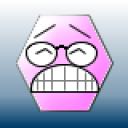3 Answers
Custer's Last Charge
| 13 years ago. Rating: 4 | |
Another stab at it here>>>>try here>>>http://www.qrg.northwestern.edu/projects/vss/docs/propulsion/2-how-are-atoms-charged.html
How are atoms charged?
A charged atom has either too many or too few electrons. In DS1, atoms are heated until they are very high energy and unstable. The are then hit by electrons that are discharged by a cathode ray in the thruster chamber. When the electrons hit the atoms in the chamber, they cause some of the electrons in the atoms to be stripped or knocked away. The mass of superheated, charged atoms with disassociated electrons becomes a plasma.
When one or more electrons is knocked off of an atom, it becomes positively charged. It is now an positive ion. A negative ion can be made by adding an electron to an atom.
What does electrically charged mean?
All matter in the universe (anything that has substance) is made of small components called atoms. Every atom is made up of tiny particles called electrons protons and neutrons. Electrons repel other electrons, but are attracted to protons. Protons repel one another, but are attracted to electrons. Neutrons neither attract or repel anything.
Generally, the number of electrons and the number of protons in an atom are equal to each other. When that happens,the atom is in a normal or neutral state. An entire atom becomes electrically charged when the number of electrons or protons stops being equal. The "extra" electron or proton isn't balanced by something inside the atom anymore and begins to be attracted to the protons or electrons in other atoms.
| 13 years ago. Rating: 3 | |
| 13 years ago. Rating: 3 | |

 Kaitlin
Kaitlin
 country bumpkin
country bumpkin
 lindilou
lindilou
 Deleted User
Deleted User





(oops, sorry, I'm jumpin' the gun...this was painted just BEFORE...hee hee)